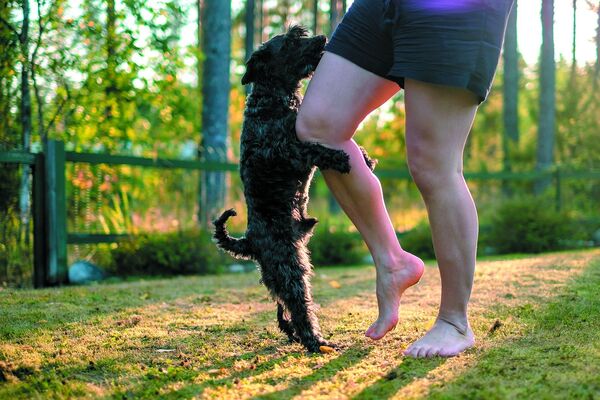If your pet keeps humping you—or even other people, objects, or animals—you’re not alone. This seemingly awkward behavior can leave pet owners confused and sometimes even embarrassed. But the truth is, humping in animals is often misunderstood. Whether it’s your dog, cat, or another pet, let’s break down the reasons behind this behavior and how you can manage it.

Humping, also known as mounting, isn’t always about reproduction. Here are some common reasons pets may engage in this behavior:
Playfulness:
Puppies and young pets may hump as part of play. They’re testing boundaries and exploring their environment, which can include humping people or objects.
Dominance:
Humping can be a way for pets, especially dogs, to assert dominance in social settings. This isn’t aggressive behavior—it’s simply a communication tool in the animal world.
Stress or Anxiety:
Pets may hump when they’re feeling overstimulated, anxious, or stressed. For instance, meeting new people or being in an unfamiliar environment might trigger humping.
Habitual Behavior:
Sometimes, humping becomes a habit due to past reinforcement. For example, if a pet received attention (even negative attention) for humping, they might continue doing it.
Sexual Instincts:
Unsurprisingly, hormones can play a role, particularly in unneutered or unspayed pets. However, it’s important to note that even neutered animals may hump due to leftover instinct or habit.
Not at all! While some pet owners worry that humping is a sign of aggression, it’s typically not. In most cases, humping is harmless and simply a form of communication or self-soothing. That said, excessive humping paired with growling or snapping could indicate a more complex behavioral issue that needs addressing.
It’s a common misconception that neutering or spaying completely eliminates humping behavior. While these procedures can reduce sexual urges, they don’t eliminate other triggers like playfulness, stress, or dominance.
If your pet’s humping is causing discomfort or embarrassment, here are steps you can take:
Identify the Cause:
Observe when your pet humps. Are they bored, anxious, or overstimulated? Pinpointing the trigger can help you address the root cause.
Distract Your Pet:
Redirect your pet’s attention with toys, training commands, or treats. For instance, teaching your dog commands like “sit” or “stay” can interrupt the behavior.
Avoid Encouraging the Behavior:
Don’t laugh, scold, or react dramatically, as this could reinforce the behavior. Instead, calmly redirect their focus.
Provide More Physical and Mental Stimulation:
Regular walks, playtime, and interactive toys can reduce boredom and excess energy, common triggers for humping.
Consider Training:
Professional trainers or behaviorists can help curb excessive humping through positive reinforcement techniques.
Excessive humping might indicate an underlying health issue, such as:
Urinary tract infections
Skin allergies or irritation
Hormonal imbalances
If your pet’s humping behavior is sudden or excessive, consult a veterinarian to rule out medical problems.
Dogs:
Humping is most common in dogs and can be caused by all the reasons mentioned above. Dogs may also hump other animals, humans, or even furniture.
Cats:
While less common, cats can also hump. Male cats, whether neutered or not, may hump blankets or toys due to hormonal instincts or stress.
Small Animals (Rabbits, Ferrets, etc.):
These animals may mount each other as part of social behavior, dominance, or play.
Is Humping Always Sexual?
No. While hormones play a role, most humping behavior in domestic animals is not related to reproduction.
Do Female Animals Hump Too?
Yes, female pets can hump, often for reasons like playfulness, dominance, or stress.
Why Do Animals Hump Objects?
Objects like pillows or toys can provide an outlet for stress, boredom, or leftover sexual instincts.
Why Does My Pet Only Hump Certain People?
Pets may hump individuals they feel especially comfortable with, or they might be reacting to that person’s scent, energy, or behavior.
Humping Isn’t Limited to Pets: In the wild, animals like monkeys and certain birds also exhibit mounting behavior for reasons ranging from social bonding to dominance.
Training Can Start Early: Addressing humping behavior in puppies or kittens is easier than correcting it in adult animals.
Humping might seem strange or embarrassing, but it’s a natural behavior for animals. Understanding why your pet humps and addressing the underlying cause can help you manage it effectively. With patience, training, and sometimes professional guidance, you can ensure your furry friend exhibits more appropriate behavior while still feeling loved and supported.
animal tags: monkey
We created this article in conjunction with AI technology, then made sure it was fact-checked and edited by a Animals Top editor.